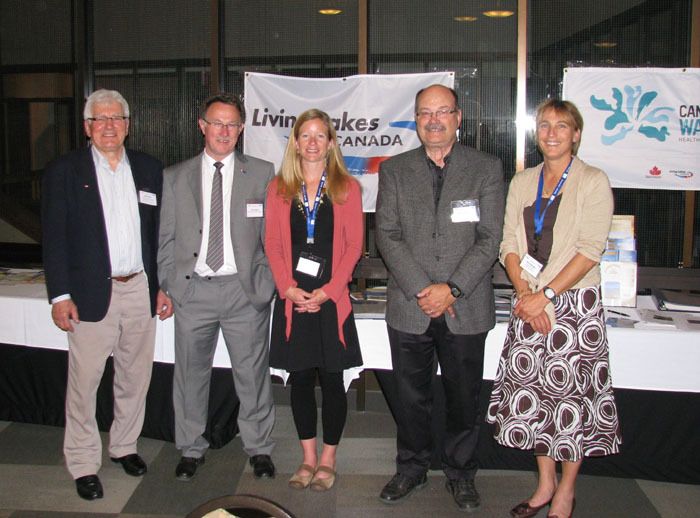Lake Windermere is making waves internationally now that Living Lakes Canada is using it as a model for community stewardship of local waters.
At the first annual gathering of Living Lakes Canada, which took place from May 22 to 24 in Winnipeg, the focus was on Lake Winnipeg and the environmental challenges its watershed is facing. Living Lakes International delegates from England and Germany were also on hand, providing examples from Europe of large lakes with pollution problems that had been solved.
But the conference was relevant to the Columbia Valley because Lake Windermere was presented as an example of the success a community can achieve through working together across varied interest groups in order to protect its shared liquid asset.
“One of the things that was used as an example for the Lake Winnipeg watershed and basin is how we were able to [not only] pull together the community to stewardship the lake but also to get various sector representations as the ambassadors of the lake,” Wildsight development director Kat Hartwig said.
What Wildsight began as a five-year lake stewardship project for Lake Windermere has today morphed into the highly successful Lake Windermere Ambassadors, now its own entity and steered entirely by community members dedicated to protecting their lake.
Wildsight went on to co-found Living Lakes Canada in late 2010 with the Lake Winnipeg Foundation, and now has partner organizations across the country and even Global Nature Fund in Germany.
“The goal [of Living Lakes Canada] was to share information about water stewardship across the country, as well as international borders,” Hartwig said.
The three-day conference touched on a myriad of aspects to do with lakes from climate change to wetland restoration to land and surface water management, and included presentations by research and fisheries scientists, authors, First Nations and the Minister of Conservation and Water Stewardship Gord MacIntosh, to name just a few.
Hartwig gave a presentation of her own titled “Building Partnerships, Engaging Communities: The Lake Windermere Example” in which she highlighted the success of the Ambassadors, who are actually being used as a role model by Parks Canada and many other communities, including Kootenay Lake.
“But really, I think what people were looking at was the SHIM work, the sensitive habitat inventory mapping, that was piloted on Lake Windermere under the East Kootenay Integrated Lake Management Partnership,” Hartwig said. “That pilot was so successful that then we were able to duplicate that SHIM work on 11 other lakes, and then as well Lake Winnipeg.”
Bruce MacDonald, a retired federal fisheries biologist and advisor to Living Lakes Canada who was the lead on the SHIM work on Lake Windermere and the subsequent lakes in the area as well as Lake Winnipeg, was also one of the presenters at the Living Lakes gathering, as was Bob Sandford, the chair of the Canadian Partnership Initiative of UN Water For Life Decade, also a Living Lakes Canada advisor.
“It was quite high profile,” Hartwig said.
She said that in order to develop a water stewardship ethic within a community, people need to understand that the motivating factor can’t be just one interest group but the interest of the whole community at large.
What stands out about Lake Windermere, said Hartwig, is that it’s an example of how local residents grasped that the health of the lake was important to the health of their community.
“We had so many partnerships,” she said. “We had the Rotary Club that did a student exchange, the Canadian Cancer Society that was concerned about pesticides running into the lake, we had the mayor from Invermere form a sister lake partnership with Lake Windermere in England so that we could learn from each other.”
